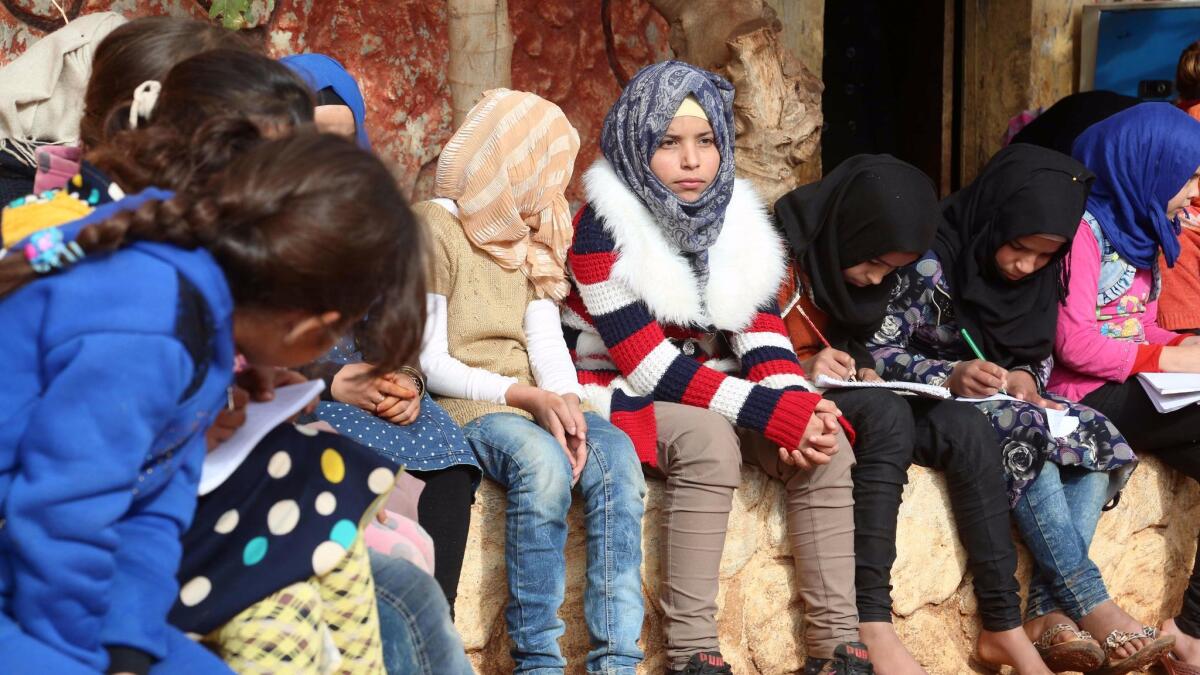Early-life stress, especially in war, can have consequences across multiple generations

- Share via
The wartime evacuation of Finnish children more than 70 years ago might have been an historical footnote, its cost to human health and happiness lost in the passage of time. More than 70,000 Finnish children were separated from their parents in a frantic rout and whisked away to institutions and foster families in Sweden and Denmark.
The aim of this mass migration of unaccompanied children was to shield them from harm, as Finland had become a battleground for clashing Soviet and German forces. But studies by an international group of experts in child development have found that its effect was not wholly protective.
The abrupt separation from home, parents and familiar routines left a dark mark on a generation of Finns, particularly women. Now ranging in age from 71 to 82, the female evacuees — though not the males — were hospitalized for a mood disorder at higher rates than their peers who had stayed at home with their families
Now researchers have discovered that this shadow of depression has fallen on their daughters as well.
The new study, published this week in JAMA Psychiatry, matched the children of evacuees to their cousins — offspring of Finnish women who had stayed with their families during the war — and compared their histories of psychiatric hospitalization. It found that Finnish women whose mothers had been evacuated were roughly twice as likely to be hospitalized for a mood disorder than were their female cousins whose mothers had stayed put.
The sons of evacuees did not show such differences.
“When we study children’s experience of early adversity, we often refer to it as the long arm of childhood,” said University of Georgia psychologist Katie Ehrlich, who was not involved in the new study. “These experiences affect mental and physical health across the lifespan and across the course of development.”
Earlier studies that tracked the mental and physical health of Holocaust survivors and their children, as well as of Dutch civilians who weathered the severe famine of 1944 and 1945, have certainly pointed to the possibility of intergenerational health effects. But the JAMA Psychiatry study offers rigorous new evidence that “the long arm of childhood is a lot longer than we had thought,” Ehrlich said.
The finding that girls suffer more than boys is an intriguing mystery, she added. It may reflect the simple fact that mood disorders in general are more prevalent in women than in men, perhaps because some unknown biological mechanism may protect boys from certain stresses. It may also suggest that at a certain age, girls are more sensitive to maternal depression, or to disruptions in social relationships, than are boys.
“This study raises a lot more questions than it answers,” Ehrlich said.
The new research comes as millions of children across the world are experiencing dislocation, adversity and family disruption.
The United Nations High Commissioner for Refugees estimates that 65.6 million people were uprooted from their homes by conflict and persecution at the end of 2016, and that approximately half of them were children. Of the world’s 2.8 million asylum-seekers, UNHCR counted 75,000 claims from children traveling alone or separated from their parents.
While most Finnish children spent between two and five years separated from their families, the children currently displaced by war, famine and natural disasters face potentially longer dislocations.
Closer to home, nearly half of U.S. children — about 31 million — are currently thought to live in households near or below the poverty line. Those children face uncertain access to food, shelter, healthcare and quality education. All of these qualify as adverse conditions for development.
MORE IN SCIENCE
More than half of U.S. kids will be obese by the time they’re 35, study predicts
Your spouse may drive you crazy, but your marriage might keep you from losing your mind







